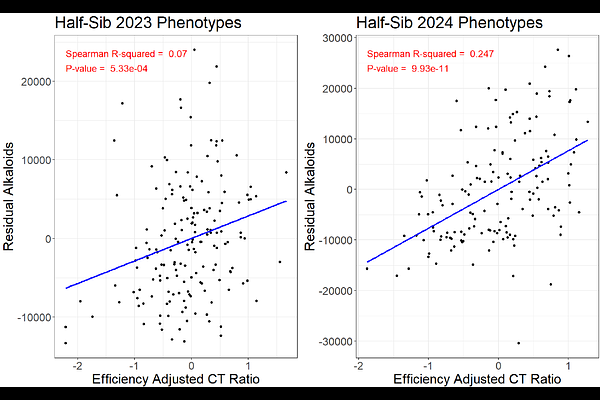The relationships among alkaloid production, fungal biomass, and host genetics in the Tall Fescue-Epichloe symbiosis

The relationships among alkaloid production, fungal biomass, and host genetics in the Tall Fescue-Epichloe symbiosis
Talamantes, D. R.; Phillips, C.; Young, C.; Wallace, J.
AbstractTall fescue (Lolium arundinaceum) is an important forage and turf grass that covers 35 million acres (140,000 square kilometers) in the transition zone of the southeastern United States. Most tall fescue in the US is infected with a symbiotic fungus, Epichloe coenophiala, which confers biotic and abiotic stress tolerance for the plant but also produces toxic alkaloids that harm livestock. Although there has been prior evidence that the grass host can influence alkaloid production levels, these have never been precisely quantified. Here, we report on testing alkaloid production and relative fungal biomass on >1000 genetically distinct tall fescue plants. We find that these two traits are weakly correlated, and that both show evidence of moderate to high influence by the host genome. Genome-wide association find only a single marginally significant hit, however, implying that any genetic control by the host is spread among a large number of genes. These results indicate that the host plant exerts moderate influence on these endophytic traits, that the two are largely independent of each other, and that the hosts influence is likely due to a large number of genes of small effect. These results have relevance for breeding tall fescue for forage and turf production, and especially for optimizing the endophyte relationship for tall fescue management.